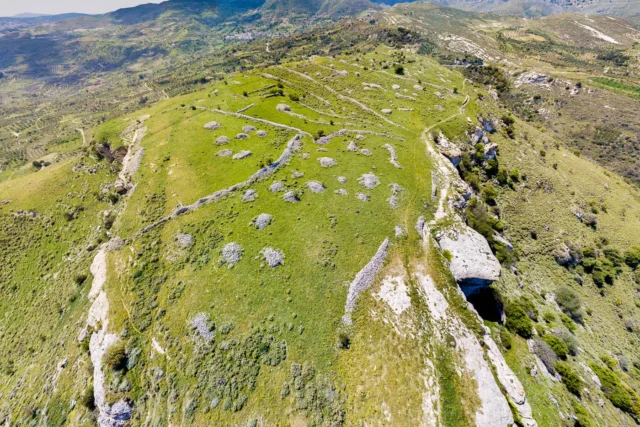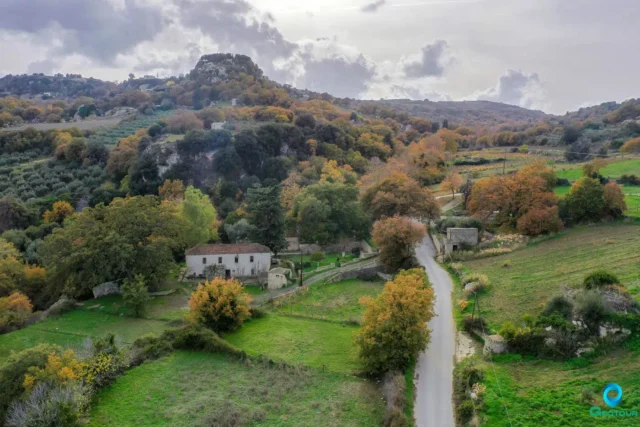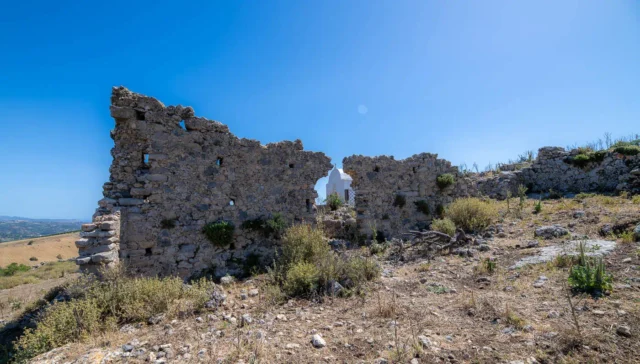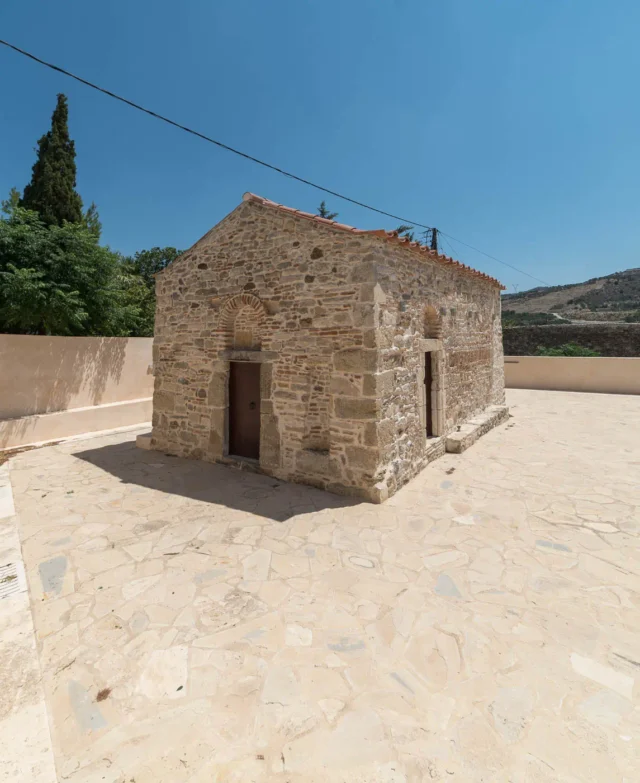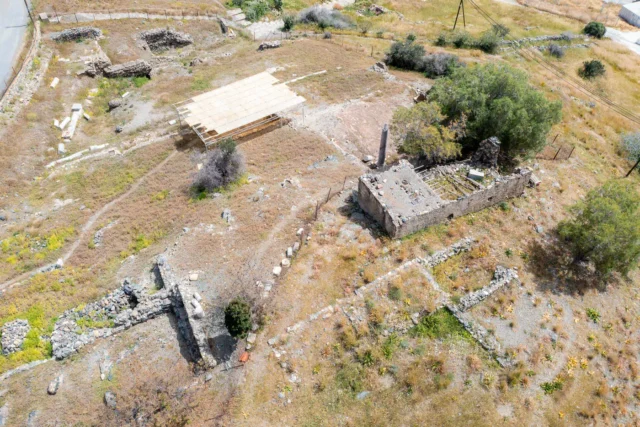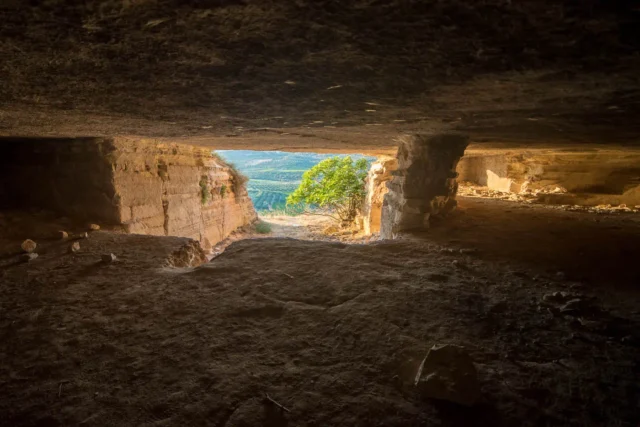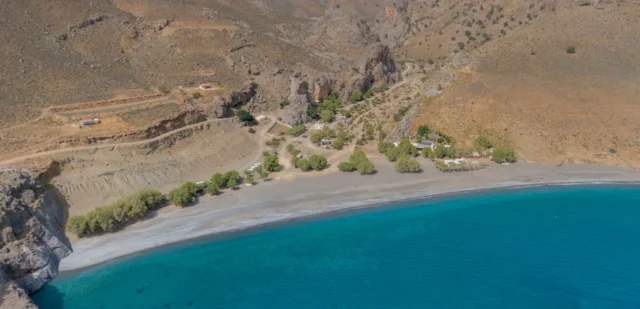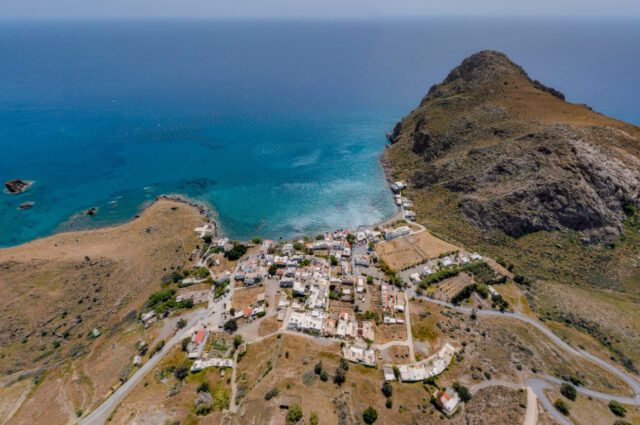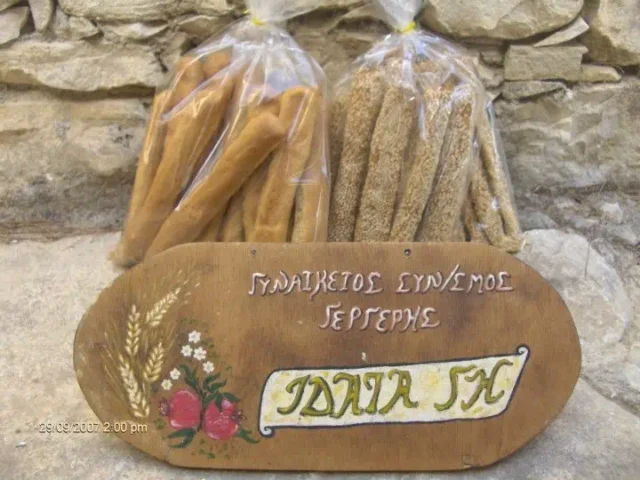80
listings found
Categories
Active filters:
Apesokari Tholos tombs
The Apesokari Tholos Tombs in Crete are significant Early Minoan burial sites. Tholos Tomb A features a unique circular burial chamber and annex, used for both primary and secondary burials. Tholos Tomb B includes multiple rooms with evidence of communal drinking and larnax burials. Both tombs offer valuable insights into Early Minoan funerary practices and social organization.
Ancient Rizinia
Rhizenia, also known as Prinias, was a city in central Crete during the Late Minoan IIIC period (around 1200 BC). Located on the Patela plateau, it held a strategic position overlooking key communication routes. Rhizenia likely played a crucial role in the region's political and economic landscape. The necropolis of Siderospilia has revealed much about burial practices and social structures of the time. The city's political system was unique, possibly incorporating both aristocratic and democratic elements. Archaeological investigations have revealed insights into urban layout, religious practices, and daily life. Imported artifacts from Cyprus and Egypt underscore Rhizenia's integration into a wider network of exchange during the Early Iron Age.
Panagia Kardiotissa in Agios Thomas
Panagia Kera Kardiotissa, a 14th-century Byzantine monastery near Agios Thomas in Crete, is dedicated to the Nativity of the Virgin Mary. Located in a lush landscape at an altitude of 630 meters, the monastery is situated in a place called Mouzouras, next to the Axedianos River. The monastery once housed a miraculous icon of Panagia Kardiotissa, depicting the Virgin Mary holding Christ. The icon's origins are debated, with some attributing it to an Armenian monk named Lazarus and others to the Heraklion painter Andreas Ritzos. The icon's miraculous powers were documented as early as 1415. The monastery became a significant pilgrimage site in 1912 following a vision of the icon of Saint George. It served as a nunnery from 1935 to 1962 and sheltered residents during the German occupation. Today, the renovated site features a centuries-old oak tree, peacocks, and a workshop for traditional weaving.
Melissa Fortress
Melissa Fortress, near Agios Thomas, Crete, offers panoramic views of valleys. Built in the 11th century during the Byzantine Komnenian period, it controlled strategic routes. The site features a central tower-like structure, perimeter walls, and the well-preserved Zoodochos Pigi chapel, possibly a former monastery. The ruins indicate a pentagonal layout, with a small settlement, Melissa, existing nearby. Historical records note its presence in Venetian and Turkish documents, though it was not utilized or maintained by the Venetians, leading to its abandonment. The ruins reveal a glimpse into Byzantine era fortifications and regional control.
Timios Stavros in Vorizia
Byzantine church near Varsamonero Monastery, Crete, with 14th-century frescoes and intricate stonework. Active place of worship with annual feast day celebrations.
Lebena (Leveen)
Lebena, an ancient city on Crete's southern coast, is renowned for its Sanctuary of Asclepius, the Greek god of medicine. The city's strategic location near a good harbor and its association with the healing cult of Asclepius made it an important center for both trade and religious pilgrimage. Lebena was also a significant port for trade and commerce with the East during the Prepalatial period. The site of Lebena has a long history of occupation, with evidence of inhabitation dating back to the Neolithic and Early Minoan periods (ca. 3rd millennium BC). The presence of a variety of Eastern imports in secure Prepalatial contexts at Lebena, including faience, gold, ivory, and Egyptian scarabs, suggests that Lebena was a significant port for trade and commerce with the East during this time. In the Late Classical period (ca. 4th century BC), the Gortynians established the sanctuary dedicated to Asclepius at the harbor. The city was destroyed by a powerful earthquake in 46 BC but was subsequently rebuilt. The sanctuary continued to flourish throughout the Roman period, as evidenced by the numerous inscriptions and archaeological finds from the site. The strategic location of Lebena on the south coast of Crete made it an ideal location for a port. The sheltered bay would have provided a safe harbor for ships, and the proximity to the Asterousia Mountains would have offered protection from storms. Additionally, Lebena's location on the south coast would have made it a convenient stopping point for ships traveling between the Aegean and the Near East. The presence of Eastern imports at Lebena suggests that the site was an important point of contact between Crete and the East during the Prepalatial period.
Trypiti Minoan settlement
Trypiti: An Early Minoan Settlement Perched on a Cretan Hilltop The Early Minoan settlement of Trypiti, located on a rocky hill overlooking the bay of Trypiti in southern Crete, offers […]
Roman tombs on Gra Mantra
Agios Thomas, a Cretan mountain village, features distinctive rock-cut architecture, including Minoan wine presses and Roman tombs. The area, marked by impressive rock formations and natural caves, hosts Byzantine churches and lush greenery. Gra Mantra, a burial monument, contains numerous Roman tombs. A chapel of Kera Spiliotissa near Ardachtia displays a Greco-Roman inscription indicating a sanctuary dedicated to Larki Artemis, Demeter, and Kore. Evidence suggests a cult dedicated to chthonic deities, with local customs reflecting this. The village, part of the Gortyna Municipality, is rich in water and orchards, with a unique geological landscape.
Small Labyrinth cave
The Small Labyrinth Cave, or Labyrinthaki Cave, is an ancient 300-square-meter quarry located 50 kilometers south of Heraklion, between Plouti and Moroni, Crete. Used for stone in Minoan Phaistos, Agia Triada, and Roman Gortys, it features columns and labyrinthine passages. Distinguishing it from the larger Labyrinth Cave on the same hill, it has a depth of 120 meters and shares similar geological formations. Local tradition suggests secret passages connect the two caves, despite rockfall blockages. This site offers insights into ancient quarrying and Crete's historical architecture.
Moni Koudouma
Koudoumas Monastery is one of the oldest monasteries on the southern coast of central Crete, Greece. It is situated at the exit of the Katarraktis gorge in the Asterousia Mountains, […]
Trypiti beach
Located on the southern coast of Crete's Heraklion prefecture within the Asterousia Mountains, approximately 57-73 km south of Heraklion city and 12 km east of Lendas. It sits at the exit of the Tripiti Gorge. The name relates to local geology and the Panagia Tripiti chapel cave. Access involves unpaved dirt tracks from Lendas or Vassiliki, often requiring a 4x4 vehicle, particularly the route through the narrow final gorge passage. The 400m beach features fine pebbles, clear, calm waters sheltered by Cape Fylakas, though it deepens quickly offshore. Tamarisk trees and cliffs offer shade. Despite difficult access, it's popular with locals and can be crowded. Basic tavernas are available, but no organized facilities exist. The area, part of Natura 2000, sees local caravan presence. Activities include swimming, snorkeling, hiking to nearby Minoan ruins of Papouri, and stargazing.
Trafoulas beach and gorge
Trafoulas Gorge: A Geological Masterpiece in the Asterousia Mountains Trafoulas Gorge is a breathtaking geological formation located southeast of the village of Krotos in the Asterousia Mountains. Hidden from the […]
Gortyna archaeological site
Gortyna, located on Crete's Mesara Plain, was a major ancient city second only to Knossos. Inhabited since the Neolithic period (7000 BCE), it flourished during the Bronze Age under Minoan and Mycenaean civilizations. By the Archaic and Classical periods, Gortyna was a powerful city-state, sometimes allied with, sometimes rivaling, Knossos. In 67 BCE, Romans conquered Crete, making Gortyna capital of the province of Crete and Cyrenaica. The city thrived under Roman rule, with new infrastructure like the Praetorium, amphitheater, and Sanctuary of the Egyptian Gods.
A key discovery is the Gortyn code, the oldest known complete ancient Greek law, offering insights into 5th century BC social, economic, and legal structures. Gortyna embraced Christianity during the Byzantine era, evidenced by the Basilica of Saint Titus. The Arab conquest in the 9th century CE led to its decline. Today, Gortyna is a major archaeological site with ongoing excavations. Key sites include the Praetorium, Odeon (housing the Gortyn code inscription), amphitheater, Pythion Theater, Sanctuary of the Egyptian Gods, Basilica of Saint Titus, and Acropolis.
Honey Romanakis
We are the fourth generation of beekeepers and we deal exclusively with the production and packaging of Cretan honey, faithfully pursuing our family tradition. We produce honey of unique quality […]
Idaia Gi – Women’s Cooperative
Ten women from the mountain village of Psiloritis, Gergeri, founded a cooperative aspiring to keep alive the homemade recipes their grandmothers bequeathed them. This became their job and passion for promoting […]
Tο Konaki – Omada Melissoparagogon Gergeris
We are a group of beekeepers at the foot of Psiloritis. We have been dealing with bees since 1975. In 1993 we founded the company entitled “OMADA MELISSOPARAGOGON GERGERIS OE”. […]










